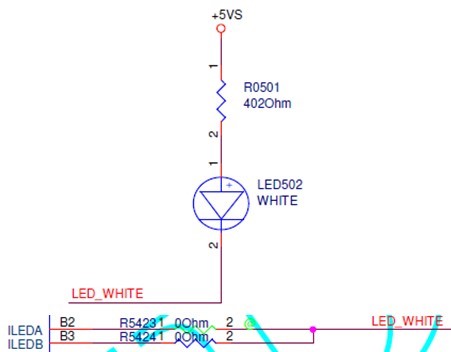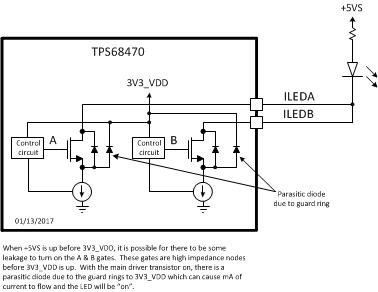Hi,
Some questions as below.
- If LDO_AUX2 is not used, how should we connect 3V3_SUS?
- If 3V3_SUS is supplied before 3V3_VDD, is there any side effect?
- As below, if 5VS is supplied while 3V3_SUS/3V3_VDD is not available yet, customer found the LED will be lighted up. Is this normal? Why?
Thanks!
Antony





